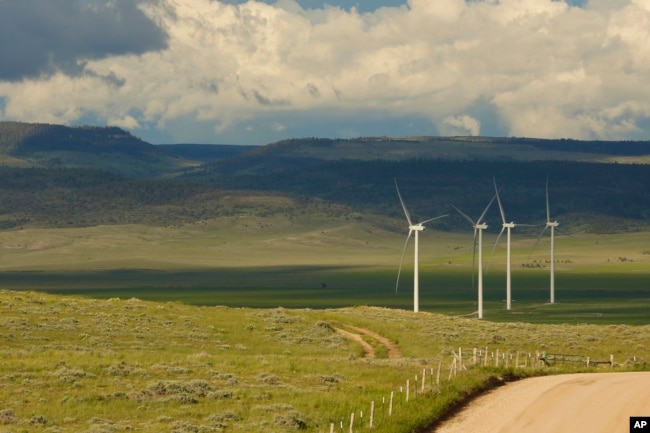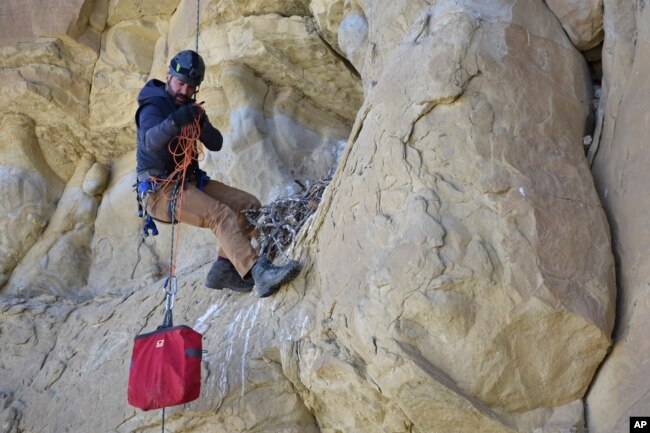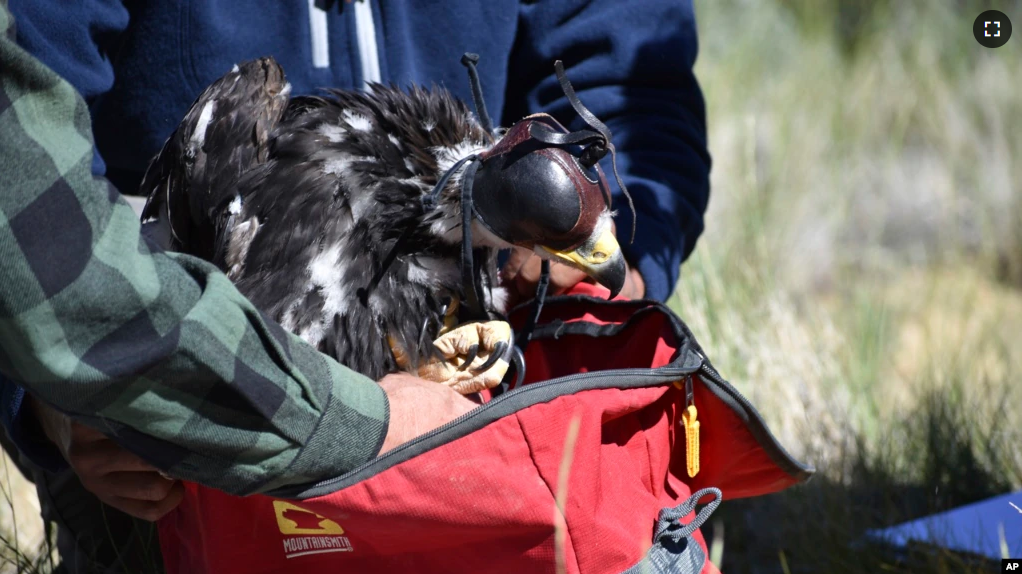The golden eagle – a large, powerful bird – is at the center of an effort to balance environmental protection and energy in the western United States.
Government policy protects golden eagles. But it also supports the building and growth of wind farms. Wind farms are groups of huge windmills that produce electricity from the wind. The problem is that windmills are often responsible for killing golden eagles.
In Wyoming
The center of the conflict is Wyoming, a state where many golden eagles live. It is also home to a lot of large wind farms.
In April, a Florida-based power company pleaded guilty in federal court in Wyoming to criminal violations of wildlife protection laws. Its wind turbines killed more than 100 golden eagles in eight states. The case was the third conviction of a major wind company for killing eagles in 10 years.

Federal officials have tried to cut wind turbine deaths while avoiding any slowdown in the growth of wind power. Some consider wind power to be a better choice than carbon-based fuels that release carbon gasses into the air.
Fossil fuel reductions are a big piece of President Joe Biden’s climate-related plans.
Bryan Bedrosian is the conservation director at the Teton Raptor Center in Wilson, Wyoming. He said, “We have some of the best golden eagle populations in Wyoming, but it doesn’t mean the population is not at risk.” He added, “As we increase wind development across the U.S., that risk is increasing.”
Unclear future
Golden eagles do not reproduce until they are about five years old. They have one baby bird, or chick, every two years. As a result, adult eagle deaths have large effects on the population, Bedrosian said.
There are about 40,000 golden eagles in the U.S.
Scientists say deaths from collisions at wind farms could drive down golden eagle numbers.
Despite the deaths, scientists like Bedrosian say more turbines are needed to fight climate change.

The U.S. Geological Survey (USGS) says the number of wind turbines nationwide more than doubled over the past 10 years to almost 72,000. Wind development projects often overlap with golden eagle living areas in states including Wyoming, Montana, California, Washington and Oregon.
USGS scientists said in a recent study that increased turbine-caused deaths could cut golden eagle populations almost in half over 10 years. That could happen if predicted growth in wind energy continues, the scientists warned.
But, the lead writer of the study, Jay Diffendorfer, said no population-wide decreases have been seen in recent years. This suggests that some predictions might not be correct.
Climate change is also a great threat to golden eagles. The National Audubon Society warns rising temperatures could reduce golden eagle breeding areas by more than 40 percent within about 80 years.
The federal government estimates that illegal shootings are the biggest cause of golden eagle deaths, killing about 700 golden eagles each year. More than 600 die each year in crashes with cars, wind turbines and power lines. About 500 are electrocuted and more than 400 are poisoned.
Federal wildlife officials are pushing wind companies to take part in a permitting program that lets companies kill eagles if the deaths are offset. Offset means to create an equal balance between things.
Companies with permits could pay utility companies to replace power poles, so that lines are spaced far enough that eagles cannot be easily electrocuted. Every 11 poles that are changed means one less eagle death each year.
Nationwide, 34 permits that were in place last year permitted companies to “take” 170 golden eagles. That means 170 birds could be killed by turbines or lost through effects on nests or living areas.
For each loss, companies are responsible for ensuring at least one eagle death is avoided somewhere else. Using conservative estimates that method could even mean a gain of eagles over time, said Brian Millsap. Millsap heads the U.S. Fish and Wildlife Service’s eagle program.
He said: “This sounds crass but it’s realistic. Eagles are going to be incidentally killed at wind farms…We’ve got to reduce other things that will allow wind energy development.”
I’m John Russell.
Matthew Brown reported on this story for the Associated Press. John Russell adapted it for Learning English.
_____________________________________________________________________
Words in This Story
turbine – n. a tall structure that has large blades attached to an engine and that is used to produce electricity
conviction – n. the act of proving that a person is guilty of a crime in a court of law
conservation – n. the protection of animals, plants, and natural resources
overlap – v. to have parts that are the same as parts of something else
utility company – n. a company that provides electricity, water, or another necessary service
nest – n. the place where a bird lays its eggs and takes care of its young
crass – adj. having or showing no understanding of what is proper or acceptable : rude and insensitive
incidentally – adv. not intentionally
